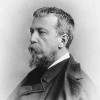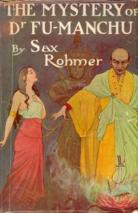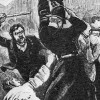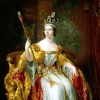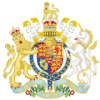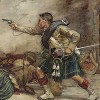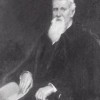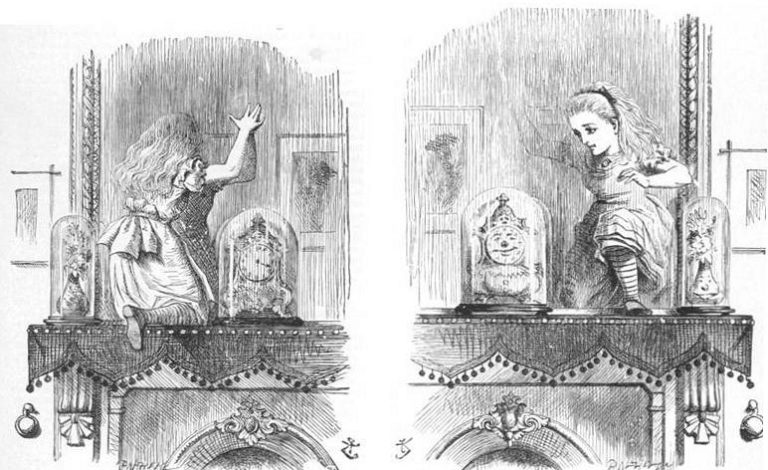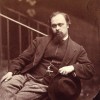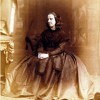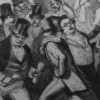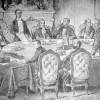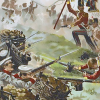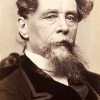EN316: Revolution and Empire: British Literature from 1660-1900
Created by Stacey Kikendall on Sun, 02/07/2021 - 17:58
This timeline presents important dates and events from the Restoration up through the end of the Victorian period, with special reference to authors and their works we read in class.
Timeline
Chronological table
|
Date |
Event | Created by | Associated Places | |
|---|---|---|---|---|
| 4 Apr 1906 |
Aborigines Act 1905
Articles |
David Rettenmaier | ||
| 11 Oct 1899 to 31 May 1902 |
Second Boer War
ArticlesJo Briggs, “The Second Boer War, 1899-1902: Anti-Imperialism and European Visual Culture” |
David Rettenmaier | ||
| Apr 1895 to May 1895 |
Trials of Oscar Wilde
ArticlesAndrew Elfenbein, “On the Trials of Oscar Wilde: Myths and Realities” |
David Rettenmaier | ||
| 27 Jun 1894 |
End of the 3-Volume Novel
ArticlesRichard Menke, “The End of the Three-Volume Novel System, 27 June 1894″ |
David Rettenmaier | ||
| 1894 |
"New Aspect of the Woman Question"In March 1894, Sarah Grand's “The New Aspect of the Woman Question” was published. The essay in North American Review, vol.158, no.448, March 1894, pp.270–6 has been credited with identifying the "New Woman." ArticlesMeaghan Clarke, “1894: The Year of the New Woman Art Critic” |
David Rettenmaier | ||
| 6 Oct 1892 |
Death of Tennyson
ArticlesLinda Peterson, “On the Appointment of the ‘Poet Laureate to Her Majesty,’ 1892-1896” |
David Rettenmaier | ||
| Jan 1892 |
"The Yellow Wallpaper"
Articles |
David Rettenmaier | ||
| Nov 1890 |
The Yellow PerilThe Yellow Peril was a term originated in Imperial Germany in the 1890s. This term was a color-metaphor referred to Western fears that Asians, particularly the Chinese, would invade their lands and disrupt Western values, such as democracy, Christianity, and technological innovation. The term of the Yellow Peril spread through Britain with the rise of Chinese populations in the aftermath of the Boxer Rebellion (Nov 2, 1899 – Sep 7, 1901). The Boxer Rebellion was an uprising movement against foreigners that occurred at the end of the Qing dynasty in northern China. The Boxer did experienced suppression by allied forces in China; however, the Western anxieties continually increased, which turned into the fears of the “Yellow Peril”. The most recognizable character of “Yellow Peril” was Dr. Fu Manchu, a villain from the series of novels written by a British author Sax Rohmer. Image: A 1913 cover of Sax Rohmer’s The Mystery of Dr. Fu-Macnhu Articles: |
Shiqi Deng | ||
| Aug 1888 to Sep 1889 |
Jack the Ripper murdersFrom August 1888 to September 1889, the serial killer known as the Whitechapel Murderer or Jack the Ripper stalked women living in the East End of London. Related ArticlesHeidi Kaufman, “1800-1900: Inside and Outside the Nineteenth-Century East End” |
David Rettenmaier | ||
| Jul 1888 |
London Matchgirls' StrikeIn July 1888, the London Matchgirls' Strike occurred. Related ArticlesHeidi Kaufman, “1800-1900: Inside and Outside the Nineteenth-Century East End” |
David Rettenmaier | ||
| 1 Nov 1887 |
Bloody Sunday
ArticlesFlorence Boos, “The Socialist League, founded 30 December 1884″ |
David Rettenmaier | ||
| 1 Jan 1887 |
Year of Jubilee
Related ArticlesErika Rappaport, “Object Lessons and Colonial Histories: Inventing the Jubilee of Indian Tea” |
David Rettenmaier | ||
| 14 Aug 1885 |
Criminal Law Amendment Act
Related ArticlesMary Jean Corbett, “On Crawford v. Crawford and Dilke, 1886″ Andrew Elfenbein, “On the Trials of Oscar Wilde: Myths and Realities” |
David Rettenmaier | ||
| 1 Jan 1883 |
1882 Married Women's Property Act
ArticlesJill Rappoport, “Wives and Sons: Coverture, Primogeniture, and Married Women’s Property” Anne Wallace, “On the Deceased Wife’s Sister Controversy, 1835-1907″ Related ArticlesRachel Ablow, “‘One Flesh,’ One Person, and the 1870 Married Women’s Property Act” |
David Rettenmaier | ||
| Jan 1880 to Jan 1880 |
Fog eventIn January 1880, a four-day fog event in London killed some 1,100 people. Image. Photograph of Widnes (north west England in the late nineteenth century, from D. W. F. Hardie, A History of the Chemical Industry in Widnes. 1950. Courtesy of Wikimedia Commons:https://upload.wikimedia.org/wikipedia/commons/8/8c/Widnes_Smoke.jpg. Articles |
David Rettenmaier | ||
| Nov 1878 to 2 May 1881 |
Anglo-Afghan War
ArticlesZarena Aslami, “The Second Anglo-Afghan War, or The Return of the Uninvited” Related ArticlesAntoinette Burton, “On the First Anglo-Afghan War, 1839-42: Spectacle of Disaster” |
David Rettenmaier | ||
| Sep 1873 |
Financial panic of 1873 begins
Related Articles |
David Rettenmaier | ||
| 27 Dec 1871 |
Publication of Lewis Carroll's Through the Looking Glass Articles |
David Rettenmaier | ||
| 1 Jan 1871 to 1 Jan 1871 |
Disestablishment of the Irish Church The Irish Church Act of 1869, passed under the administration of William Gladstone (1809-1898), called for the disestablishment of the Church of Ireland. It was formally implemented on 1 January 1871. Image: Logo of the Church of Ireland, Fair use under United States copyright law ArticlesKimberly J. Stern, "The Publication of John Pentland Mahaffy's The Decay of Modern Preaching (1882)" |
David Rettenmaier | ||
| 9 Aug 1870 |
1870 Married Women's Property Act
This Act established limited protections for some separate property for married women, including the right to retain up to £200 of any earning or inheritance. Before this all of a woman's property owned before her marriage, as well as all acquired after the marriage, automatically became her husband's alone. Only women whose families negotiated different terms in a marriage contract were able to retain control of some portion of their property. ArticlesRachel Ablow, "On the Married Woman's Property Act, 1870" Related ArticlesKelly Hager, “Chipping Away at Coverture: The Matrimonial Causes Act of 1857″ Jill Rappoport, “Wives and Sons: Coverture, Primogeniture, and Married Women’s Property” Anne Wallace, “On the Deceased Wife’s Sister Controversy, 1835-1907″ |
David Rettenmaier | ||
| Apr 1870 |
Rossetti, Poems
ArticlesElizabeth Helsinger, “Lyric Poetry and the Event of Poems, 1870″ |
David Rettenmaier | ||
| Feb 1870 |
Elementary Education Act
Related Articles |
David Rettenmaier | ||
| 26 Jul 1869 |
Poor Rate Assessment and Collection Act
Articles |
David Rettenmaier | ||
| 15 Aug 1867 |
Second Reform Act
ArticlesJanice Carlisle, "On the Second Reform Act, 1867" Related ArticlesCarolyn Vellenga Berman, “On the Reform Act of 1832″ Elaine Hadley, “On Opinion Politics and the Ballot Act of 1872″ |
David Rettenmaier | ||
| Jul 1866 |
Permanent transatlantic cable establishedIn July 1866, in the aftermath of the Civil War, a permanent transatlantic cable was re-established after a failed attempt in 1858. Articles |
David Rettenmaier | ||
| Mar 1862 |
Goblin Market and Other Poems PublishedGoblin Market is a Victorian narrative poem written by Christina Rossetti and illustrated by her brother Dante Gabriel. Rossetti felt that the collaboration with her brother was crucial to her overall work, that she deliberately delayed the publication until Dante Garbiel’s illustrations were ready for press. He designed a total of two illustrations, the frontispiece and title page, for The Goblin Market. Both images were pressed using wood engravings, evoking the pre-raphaelite designs popular during the 1860’s. The passages appeal to the senses through vivid descriptions of colours, textures, aromas and taste. Critics assigned the poem to various general categories over the following decades and throughout the twentieth century. It was first viewed as a fairytale but was later viewed as an allegorical piece. Feminist critics often analyzed the poem’s social commentary on gender relations and the relationship between two sisters. Later in the nineteenth century, readers, reviewers, illustrators, and composers began to focus on the poem’s powerful aesthetic qualities. Its sensuous patterns, religious images, and social implications inspired the focus of school studies and as well as musical settings and performances. The power of its visual images, and the two wood-engraved designs by Dante Gabriel Rossetti in the poem’s first publication, turned to evoke numerous artistic interpretations, ranging from stained glass windows to gift books.
Curated by Kisha Rendon, Joseph Pereira, and Payton Flood Public Domain; source: COVE Goblin Market edition by Lorraine Janzen Kooistra, Antony Harrison |
Payton Flood | ||
| 24 Nov 1859 |
On the Origin of Species
ArticlesNancy Armstrong, “On Charles Darwin’s The Descent of Man, 24 February 1871″ Ian Duncan, “On Charles Darwin and the Voyage of the Beagle” Anna Henchman, “Charles Darwin’s Final Book on Earthworms, 1881” Martin Meisel, "On the Age of the Universe" Cannon Schmitt, “On the Publication of Charles Darwin’s On the Origin of Species, 1859″ Related ArticlesDaniel Bivona, “On W. K. Clifford and ‘The Ethics of Belief,’ 11 April 1876″ |
David Rettenmaier | ||
| 1858 |
English Woman’s Journal first published
Articles |
David Rettenmaier | ||
| 27 Oct 1857 |
Start of the 1857 financial crisis in England
ArticlesLynn Shakinovsky, “The 1857 Financial Crisis and the Suspension of the 1844 Bank Act” Related ArticlesCrosby, Mark. “The Bank Restriction Act (1797) and Banknote Forgery” |
David Rettenmaier | ||
| 28 Aug 1857 |
Matrimonial Causes Act of 1857
ArticlesKelly Hager, “Chipping Away at Coverture: The Matrimonial Causes Act of 1857″ Related ArticlesRachel Ablow, “‘One Flesh,’ One Person, and the 1870 Married Women’s Property Act” Jill Rappoport, “Wives and Sons: Coverture, Primogeniture, and Married Women’s Property” |
David Rettenmaier | ||
| 24 Aug 1857 |
Start of 1857 financial crisis in the US
ArticlesLynn Shakinovsky, “The 1857 Financial Crisis and the Suspension of the 1844 Bank Act” Related ArticlesCrosby, Mark. “The Bank Restriction Act (1797) and Banknote Forgery” |
David Rettenmaier | ||
| 25 May 1857 to 25 Jun 1857 |
Pre-Raphaelite Art Exhibit
Related Articles |
David Rettenmaier | ||
| 10 May 1857 to 20 Jun 1858 |
Indian Uprising
ArticlesPriti Joshi, “1857; or, Can the Indian ‘Mutiny’ Be Fixed?” Related ArticlesJulie Codell, “On the Delhi Coronation Durbars, 1877, 1903, 1911″ |
David Rettenmaier | ||
| 15 Nov 1856 |
Aurora Leigh
ArticlesMarjorie Stone, “The ‘Advent’ of Aurora Leigh: Critical Myths and Periodical Debates” |
David Rettenmaier | ||
| 30 Mar 1856 |
Treaty of ParisOn 30 March 1856, signing of the Treaty of Paris, ending the Crimean War. Image: Treaty of Paris, the participants (Contemporary woodcut, published in Magazin Istoric, 1856). This image is in the public domain in the United States because its copyright has expired. ArticlesStefanie Markovits, "On the Crimean War and the Charge of the Light Brigade" |
David Rettenmaier | ||
| 14 Mar 1856 |
Petition for Reform of Married Women’s Property LawOn 14 March 1856, presentation of the Petition for Reform of the Married Women’s Property Law, 1856. The petition began the joint effort by lawmakers and public women to grant married women control of their own wealth. ArticlesJill Rappoport, “Wives and Sons: Coverture, Primogeniture, and Married Women’s Property” Related ArticlesRachel Ablow, “‘One Flesh,’ One Person, and the 1870 Married Women’s Property Act” Anne D. Wallace, “On the Deceased Wife’s Sister Controversy, 1835-1907″ |
David Rettenmaier | ||
| 10 Jun 1854 |
Sydenham Crystal Palace opensOpening of the Crystal Palace at Sydenham on 10 June 1854. Image: The Crystal Palace on fire (30 November 1936; author unknown). This image is in the public domain in the United States because its copyright has expired. The resurrection of the Crystal Palace of 1851 in its new setting at Sydenham, with an expanded architectural complex and enhanced functional brief, embodies the Victorian emphasis upon visuality as a means of acquiring and conveying knowledge. In addition, the new Crystal Palace was shaped by prevailing concepts of rational recreation and beneficial commerce that insisted that private and public interests could be simultaneously satisfied and lead to a stronger nation and even Empire. ArticlesAnne Helmreich, "On the Opening of the Crystal Palace at Sydenham, 10 June 1854" Related ArticlesAudrey Jaffe, "On the Great Exhibition" Aviva Briefel, "On the 1886 Colonial and Indian Exhibition" Anne Clendinning, “On The British Empire Exhibition, 1924-25″ |
David Rettenmaier | ||
| 28 Mar 1854 |
Britain declares war against RussiaOn 28 March 1854, Britain declares war against Russia, thus entering the Crimean War. Image: Russo-British skirmish during Crimean War (anonymous plate). This image is in the public domain in the United States because its copyright has expired. In 1854, in defense of the Turks and of British access to eastern trade routes, Britain entered into war in the Crimea. The two-year campaign represented the nation’s first major military engagement since the end of the Napoleonic wars. It thus sheds light on mid-Victorian attitudes towards national identity, offering a counter-narrative to views of the 1850s dominated by responses to the Great Exhibition of 1851. As literary and visual representations of the war reveal, reactions to this conflict were both more nuanced and more ambivalent than our preconceptions about Victorian jingoism might anticipate. ArticlesStefanie Markovits, "On the Crimean War and the Charge of the Light Brigade" |
David Rettenmaier | ||
| 5 Sep 1852 |
Manchester Public Library opensON 5 Sept 1852, the Manchester Public Library opened. This was Britain’s first free public lending library, opened under the 1850 Public Libraries Act. Related ArticlesAmy Woodson-Boulton, “The City Art Museum Movement and the Social Role of Art” |
David Rettenmaier | ||
| Jan 1851 |
London Labour and the London Poor
ArticlesHeidi Kaufman, “1800-1900: Inside and Outside the Nineteenth-Century East End” |
David Rettenmaier | ||
| 29 Sep 1850 |
Pius IX restores England’s ecclesiastical hierarchyOn 29 September 1850, Pius IX restored England’s ecclesiastical hierarchy; the post-seventeenth-century system of Vicars Apostolic was replaced with a hierarchy in line with the system still in place in Ireland. This change contributed to the so-called Papal Aggression over the years 1850-52, a campaign against Roman Catholocism. ArticlesMiriam Burstein, “The ‘Papal Aggression’ Controversy, 1850-52″ Related ArticlesBarbara Charlesworth Gelpi (Stanford), “14 July 1833: John Keble’s Assize Sermon, National Apostasy” |
David Rettenmaier | ||
| Jun 1850 |
In Memoriam
Related Articles |
David Rettenmaier | ||
| Oct 1848 to Dec 1849 |
Cholera EpidemicThe second major cholera epidemic in the UK began in Scotland in October 1848 and is generally agreed to have largely subsided in the UK by the end of 1849. Articles |
David Rettenmaier | ||
| Sep 1848 |
Pre-Raphaelite Brotherhood founded
Related ArticlesElizabeth Helsinger, “Lyric Poetry and the Event of Poems, 1870″ Morna O’Neill, “On Walter Crane and the Aims of Decorative Art” Linda M. Shires, "On Color Theory, 1835: George Field’s Chromatography" |
David Rettenmaier |
|
|
| 14 May 1842 |
The Illustrated London News launched
Articles |
David Rettenmaier | ||
| 17 Jul 1841 |
Punch launchedOn July 17 1841, Punch, a mass-circulation periodical, was launched. Articles |
David Rettenmaier | ||
| Feb 1840 |
First pupil-teacher training school, Battersea, establishedWith a fellow reformer, E. Carleton Tuftnell, Kay-Shuttleworth established in February 1840 the first pupil-teacher training school in Battersea. This system was later extended to schools administered by the National and British Societies. ArticlesFlorence S. Boos, “The Education Act of 1870: Before and After” |
David Rettenmaier | ||
| 17 Aug 1839 |
Act on Custody of Infants
Related ArticlesRachel Ablow, “‘One Flesh,’ One Person, and the 1870 Married Women’s Property Act” Kelly Hager, “Chipping Away at Coverture: The Matrimonial Causes Act of 1857″ Jill Rappoport, “Wives and Sons: Coverture, Primogeniture, and Married Women’s Property” |
David Rettenmaier | ||
| Feb 1837 to Apr 1839 |
Oliver Twist
Related ArticlesHeidi Kaufman, “1800-1900: Inside and Outside the Nineteenth-Century East End” |
David Rettenmaier | ||
| 1 Aug 1836 |
Newspaper Act
Related ArticlesElaine Hadley, “On Opinion Politics and the Ballot Act of 1872″ |
David Rettenmaier |






